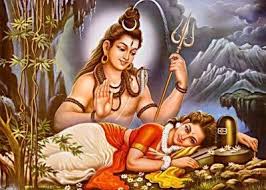
WHY DOES LORD SHIVA APPLY 'BHASMA' ON HIS BODY?
Sawan Shivratri, celebrated in honor of Lord Shiva and his wife Goddess Parvati, marks the night of their divine marriage. Devotees worldwide commemorate this auspicious occasion by offering flowers like Aak, Belpatra, and Bhang to Lord Shiva. What distinguishes Lord Shiva from other deities is his preference for 'Bhasma' or ashes over divine ornaments and luxurious clothes. The ashes are not only his ornament but also a profound symbol of his teachings.
The Story Behind Lord Shiva's Use of Ashes
According to the Shiv Purana, there was once a monk named Pranad who became powerful through intense penance, surviving only on fruits and green leaves. This lifestyle led to the monk developing control over the forest animals. One day, while repairing his hut, Pranad accidentally cut his finger. Instead of blood, plant sap flowed from his wound, making him believe that he had attained ultimate purity.
Proud of his perceived holiness, Pranad considered himself the purest being on earth. Observing this arrogance, Lord Shiva took the form of an old man and visited the monk. The disguised Shiva inquired why the monk was so pleased. Pranad explained his situation, and the old man responded by pointing out that plant sap is just another form of matter that eventually turns to ash when burned. To demonstrate the ultimate truth, Lord Shiva, in his guise, cut his own finger, revealing that ash came out instead of blood.

Realizing the lesson and the presence of Lord Shiva before him, the monk apologized for his arrogance. From that moment, Lord Shiva began applying ash on his body to remind his devotees of the impermanence of physical beauty and the importance of humility. The ash serves as a constant reminder of the ultimate truth—that everything returns to ash.
Embracing the Teachings of Shiva on Sawan Shivratri
During Sawan Shivratri, devotees apply a tilak of ashes on their foreheads, emulating Lord Shiva and embracing his teachings of humility and detachment from worldly attachments. This practice serves as a reminder to not be arrogant about physical beauty and to always remember the ultimate truth of life and death.
Celebrate the profound teachings of Lord Shiva this Sawan Shivratri with our exclusive collection of Hanuman T-shirts, Ganesh T-shirts, Krishna T-shirts, Ganpati T-shirts, Anjaneya T-shirts, Krsna T-shirts, Lord Krishna T-shirts, T-shirt Krishna, and Hindu T-shirts. To buy a variety of hindu t shirts like shivji t shirt, hanuman t shirt, ganesh t shirt, Krishna t shirt, ram t shirt, bajrang bali t shirt etc. click here! Let these sacred stories inspire your daily wear and connect you with the rich spiritual heritage of Hinduism.
[The images used in this blog post are not owned by Anime Devta, they are just for entertainment purposes]
| SAWAN SHIVRATRI | LORD SHIVA | HINDU T SHIRT | SHIVJI T SHIRT | HANUMAN T SHIRT | GANESH T SHIRT | KRISHNA T SHIRT | RAM T SHIRT | BAJRANG BALI T SHIRT | HINDU |
~Mimansa Sharma

